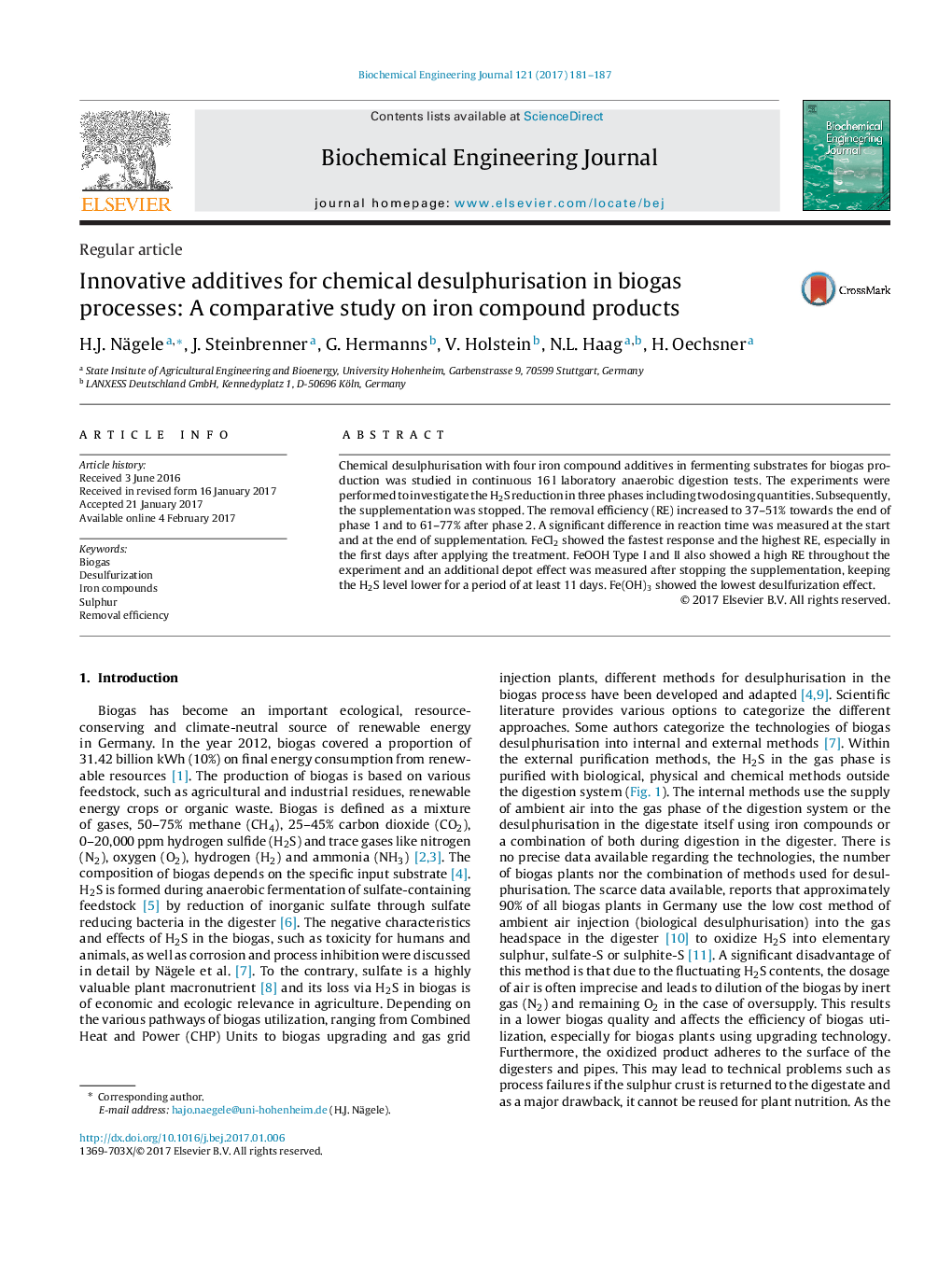| Article ID | Journal | Published Year | Pages | File Type |
|---|---|---|---|---|
| 6450400 | Biochemical Engineering Journal | 2017 | 7 Pages |
â¢The removal efficiency increased to 37-51% in dosing stage one.â¢A higher dosing resulted in higher removal efficiency (61-77%).â¢FeCl2 showed the fastest response and the highest removal efficiency.â¢FeOOH types showed a high removal efficiency throughout the experiment.â¢An depot effect was measured after stopping the supplementation of FeOOH.
Chemical desulphurisation with four iron compound additives in fermenting substrates for biogas production was studied in continuous 16Â l laboratory anaerobic digestion tests. The experiments were performed to investigate the H2S reduction in three phases including two dosing quantities. Subsequently, the supplementation was stopped. The removal efficiency (RE) increased to 37-51% towards the end of phase 1 and to 61-77% after phase 2. A significant difference in reaction time was measured at the start and at the end of supplementation. FeCl2 showed the fastest response and the highest RE, especially in the first days after applying the treatment. FeOOH Type I and II also showed a high RE throughout the experiment and an additional depot effect was measured after stopping the supplementation, keeping the H2S level lower for a period of at least 11Â days. Fe(OH)3 showed the lowest desulfurization effect.
